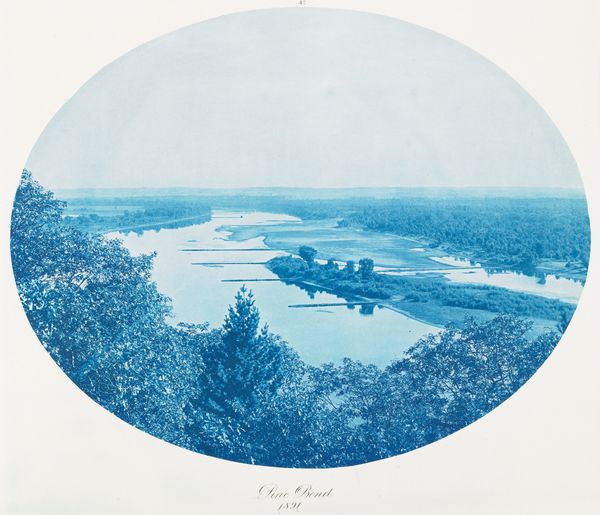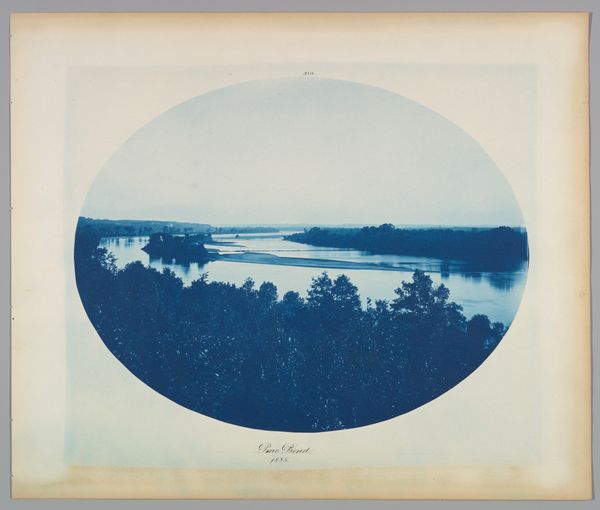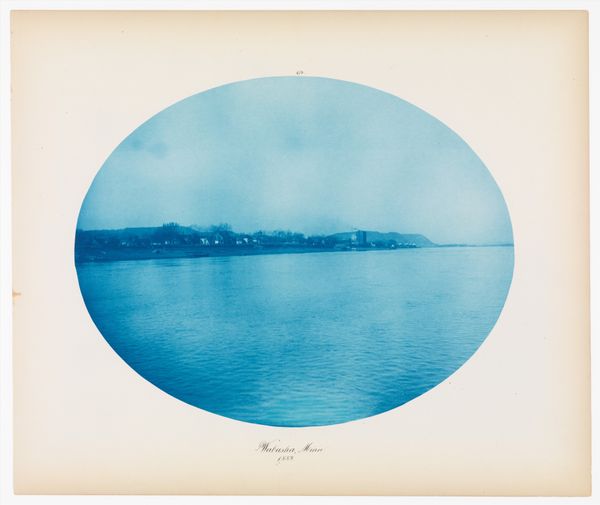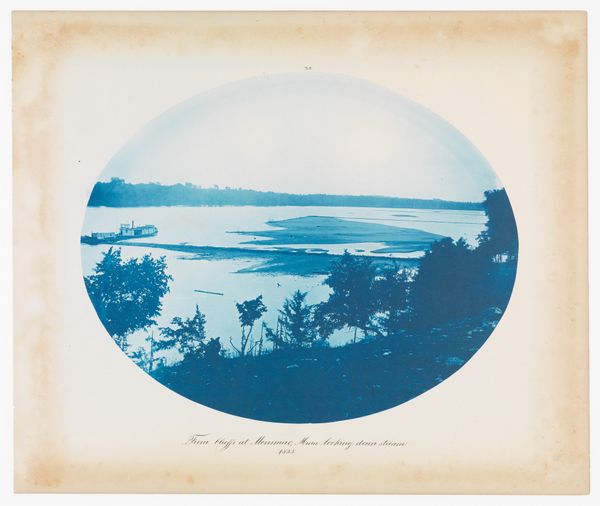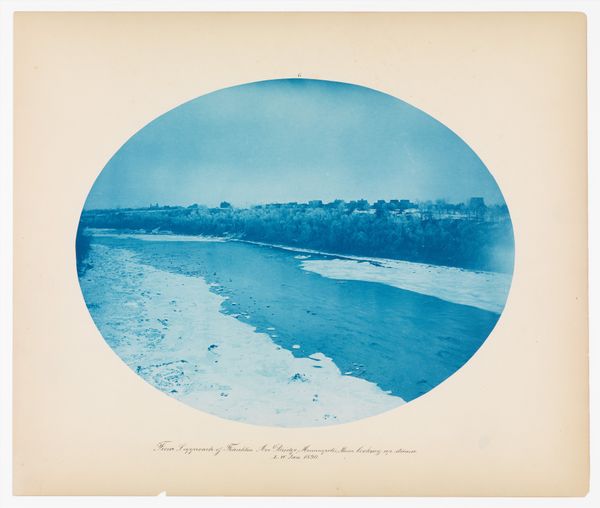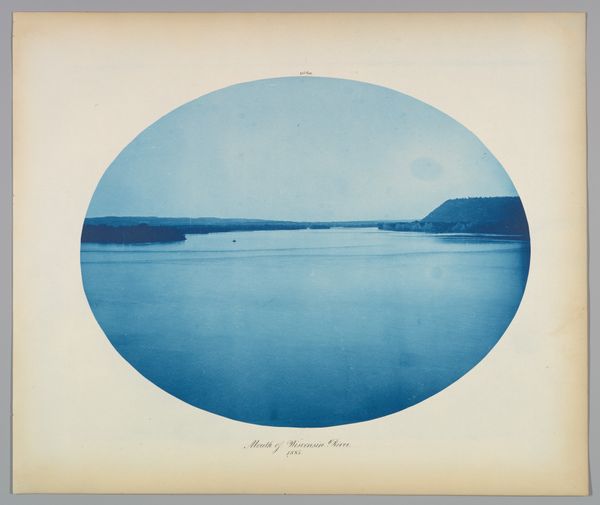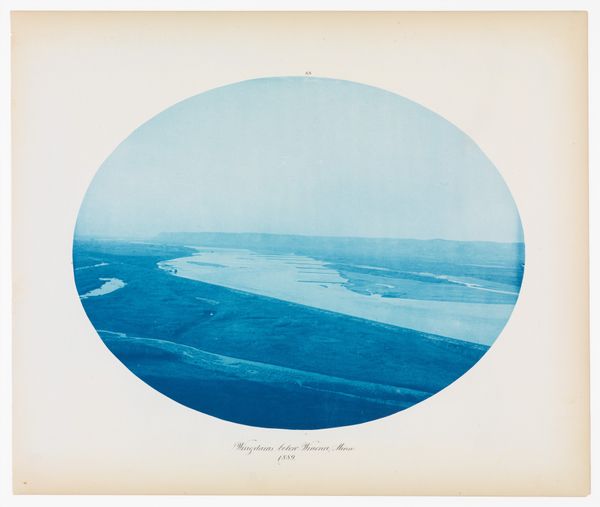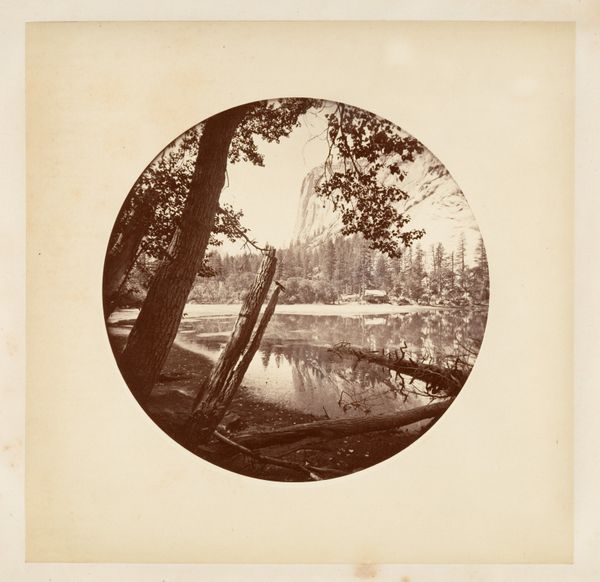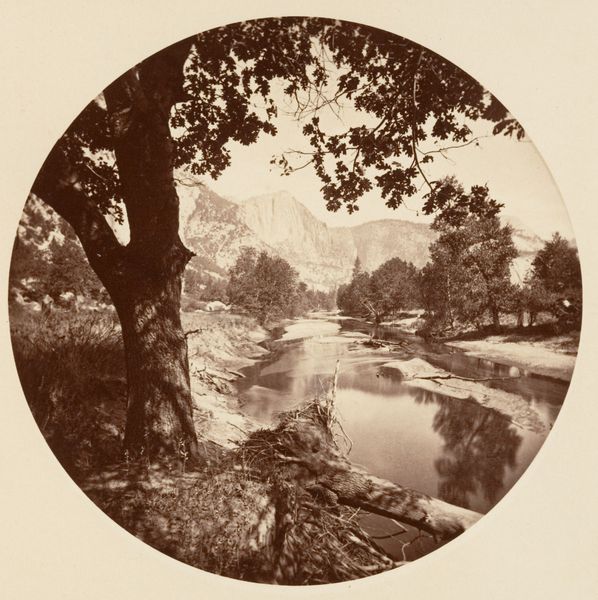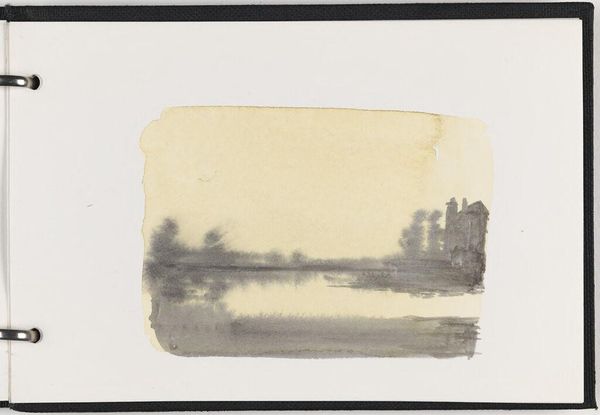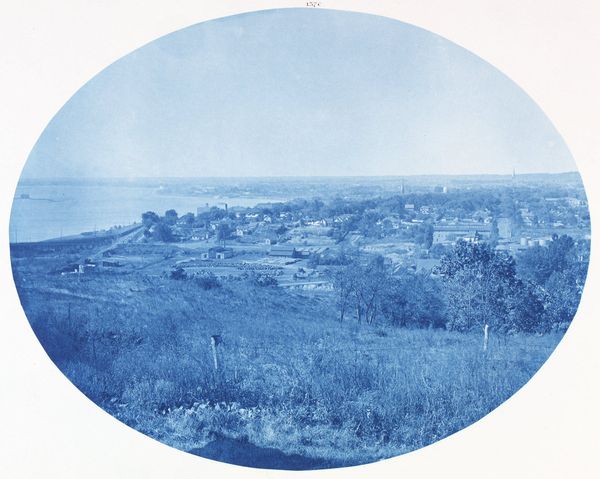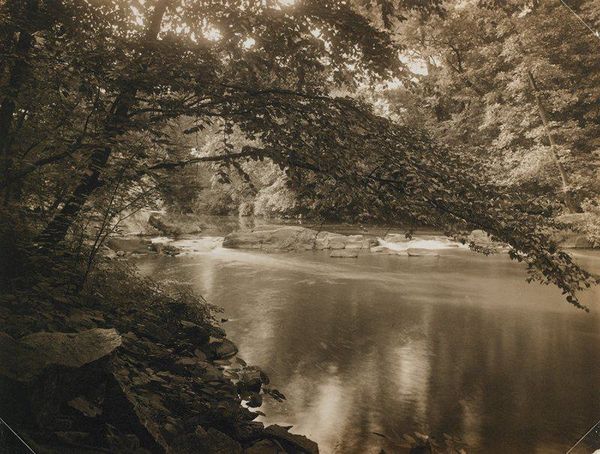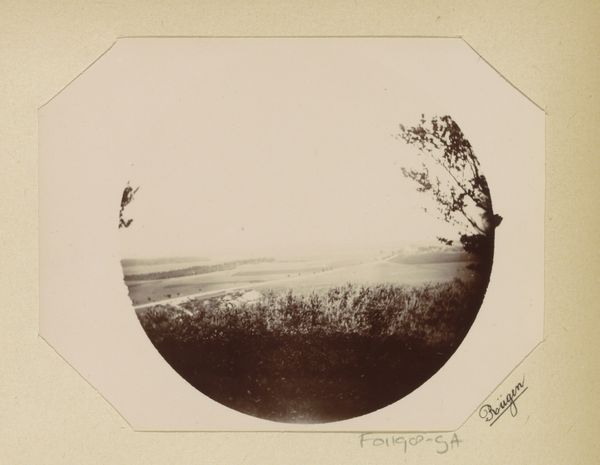
Dimensions: 10 1/2 x 13 1/2 in. (26.67 x 34.29 cm) (image, oval)14 7/16 x 17 1/8 in. (36.67 x 43.5 cm) (sheet)
Copyright: Public Domain
Curator: Gosh, what a perfectly dreamy wash of blue! It feels almost otherworldly, like peering at some memory just out of reach. Editor: Indeed. What we are looking at here is “Wingdams Opposite Robinson's Rocks,” captured in 1891 by Henry P. Bosse. It's currently held here at the Minneapolis Institute of Art. Curator: Wingdams… Robinson’s Rocks... It doesn’t exactly roll off the tongue, does it? The technical precision in the title sort of clashes with the overall serene feel, if you ask me. Editor: Well, the “wingdams” would have been engineered structures meant to control the river's flow. These works shaped waterways, altered navigation, and often redefined land use – a powerful, interventionist kind of art of its own. Curator: So, this idyllic scene carries within it an untold story of manipulating nature. Is it ironic that this manufactured infrastructure is now an unassuming visual harmony? Editor: The blue monochromatic palette here wasn't just aesthetic; it was a cyanotype, an accessible printing method, like a photograph produced using a camera-less process. This choice made his art accessible, like sharing a common blueprint. Curator: Blueprint... I love how that connects! He’s creating both a rendering and record. And there’s a curious tension created by Bosse through his lens of documentation, presenting a poetic interpretation of industrial advancement. Editor: Photography has a history intertwined with the power of institutions and scientific advancements, so the placement of the artwork reflects an aesthetic interest, but a historical moment as well. Curator: Yes! A silent nod to change. Gazing at the dreamy “Wingdams,” I’m reminded that beauty and change often share the same space; they mirror each other in the grand unfolding. Editor: So, Bosse’s artwork stands at an interesting nexus: it represents technical process, historical context, artistic interpretation and acts as a lasting reflection for future gazers, like you or I. Curator: It leaves me with a slightly bittersweet aftertaste. Maybe I'm just melancholic today... Anyway, I suppose every piece of art truly reflects who we are when we face it. Editor: And our social reality. Precisely.
Comments
No comments
Be the first to comment and join the conversation on the ultimate creative platform.
